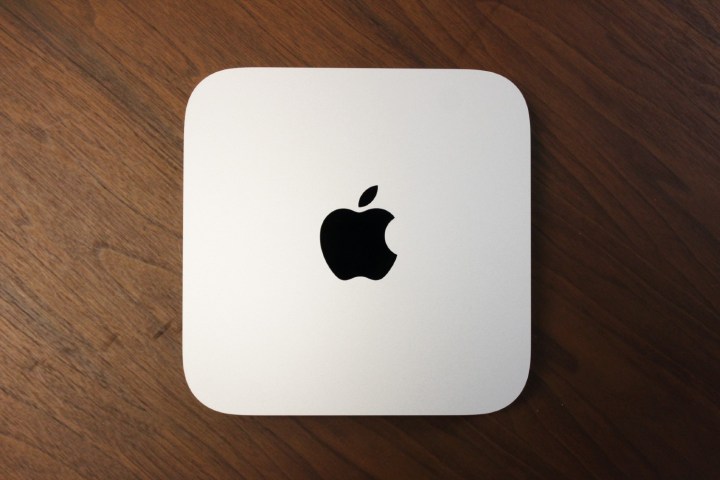
Apple’s latest Mac mini is one powerful tiny PC. First released not too long after the original Mac Studio, it comes with the M2 chip and makes an interesting alternative to its more expensive sibling, which has also received an update.
While they look alike, these two computers are not the same — they differ greatly in performance and price.
In a way, you can look at the Mac Studio like a supercharged version of the Mac mini — it’s bigger and better, but it’s also usually much pricier. As pointed out in the specs and configuration section below, you can buy a Mac Studio M2 Max 12/30 version with 32GB of RAM and spend the same as you would for a Mac mini M2 12/19 with 32GB of RAM. That’s crazy.
The decision is easy at the Mac mini low end, which is significantly more affordable than the Mac Studio. If you’re primarily a productivity user and media consumer with only lightweight creativity workflows, then the Mac mini M2 model will suffice. And if you’re the most demanding creative professional who wants the fastest possible desktop with the most memory, then the much more expensive Mac Studio M2 Ultra is for you.
Suppose you’re right in the middle, though, with reasonably demanding creativity work. In that case, the Mac Studio M2 Max offers more power and connectivity than the Mac mini M2 Pro for the same money.
Specs and configurations
| Mac mini | Mac Studio | |
| Dimensions | 7.75 inches x 7.75 inches x 1.41 inches | 7.7 inches x 7.7 inches x 3.7 inches |
| Weight | 2.6 pounds (M2) 2.8 pounds (M2 Pro) |
5.9 pounds (M2 Max) 7.9 pounds (M2 Ultra) |
| Processor | M2 (8 cores) M2 Pro (10 or 12 cores) |
M2 Max (12 cores) M2 Ultra (24 cores) |
| Graphics | M2 (10 cores) M2 Pro (16 or 19 cores) |
M2 Max (30 or 36 cores) M2 Ultra (60 or 76 cores) |
| RAM | 8GB (M2) 16GB (M2 and M2 Pro) 24GB (M2) 32GB (M2 Pro) |
Up to 192GB unified memory |
| Storage | 256GB (M2) 512GB 1TB 2TB 4TB (M2 Pro) 8TB (M2 Pro) |
512GB (M2 Max) 1TB 2TB 4TB 8TB |
| Ports | 2 x USB-C with Thunderbolt 4 (M2) 4 x USB-C with Thunderbolt 4 (M2 Pro) 2 x USB-A 1 x HDMI 1 x 3.5mm audio jack 1 x Gigabit Ethernet (optional 10GB) |
4 x Thunderbolt 4 on rear 2 x USB-C on front (M2 Max) 2 x Thunderbolt 4 on front (M2 Ultra) 2 x USB-A 1 x HDMI 1 x 10GB Ethernet 1 x 3.5mm audio jack 1 x SD card reader |
| Wireless | Wi-Fi 6E and Bluetooth 5.3 | Wi-Fi 6E and Bluetooth 5.3 |
| Operating system | macOS Sonoma | macOS Sonoma |
| Price | $599+ | $1,999+ |
| Review | 5 out of 5 stars | 4.5 out of 5 stars |
The Mac mini starts at an affordable $599 with an 8-core CPU/10-core GPU M2 chipset, 8GB of RAM, and a 256GB SSD. Fully upgraded, the Mac mini is much more expensive, $4,399 for a 12-core CPU/19-core GPU M2 Pro, 32GB of RAM, and an 8TB SSD.
The Mac Studio is significantly more expensive, with an entry-level price of $1,999 for a 12-core CPU/30-core GPU M2 Max, 32GB of RAM, and a 512GB SSD. At the high end, the Mac Studio is a whopping $8,799 for a 24-core CPU/76-core GPU M2 Ultra, 192GB of RAM, and an 8TB SSD.
There’s an interesting catch, though. The Mac mini with a 12-core CPU/19-core GPU M2 Pro is exactly as expensive as a Mac Studio with a faster 12-core CPU/30-core GPU M2 Max when configured with 32GB of RAM and the same amount of storage. In fact, when you upgrade to 10GB Ethernet (which the Mac Studio already has), the Mac mini is actually $100 more expensive. Unless you need an even more powerful machine with more than 32GB of RAM, the Mac Studio is a no-brainer by comparison.
Design
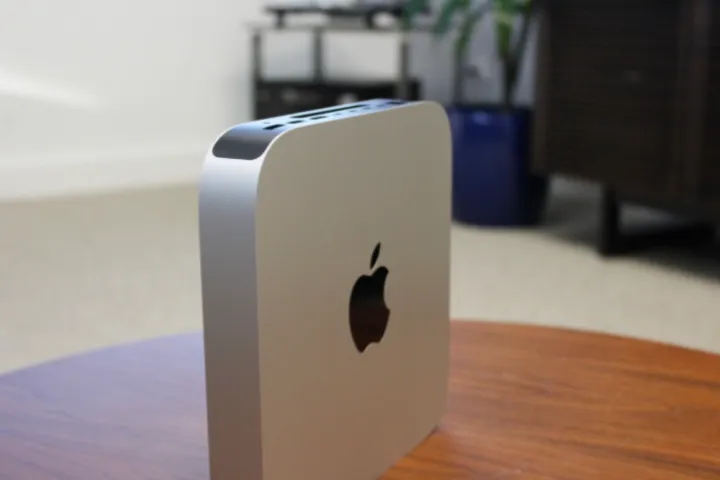
When seen from above, the Mac mini and the Mac Studio look nearly identical — like a silver square with rounded edges and Apple’s logo etched on top. However, if you put them next to each other, you’ll immediately see that the Mac Studio is much taller — over twice as tall, in fact. Both are manufactured from CNC-machined aluminum, and both are extremely well-built. You won’t be deciding between these two in terms of their minimalist yet elegant aesthetics and solid builds.

The boxes — it’s hard to refer to these PCs as anything else — have no feet or handles. The Mac mini is slim enough to fit inside a backpack, and the Mac Studio is as well, but it will likely take up most of the space. There’s also quite a bit of a difference in weight between the two.
Ports
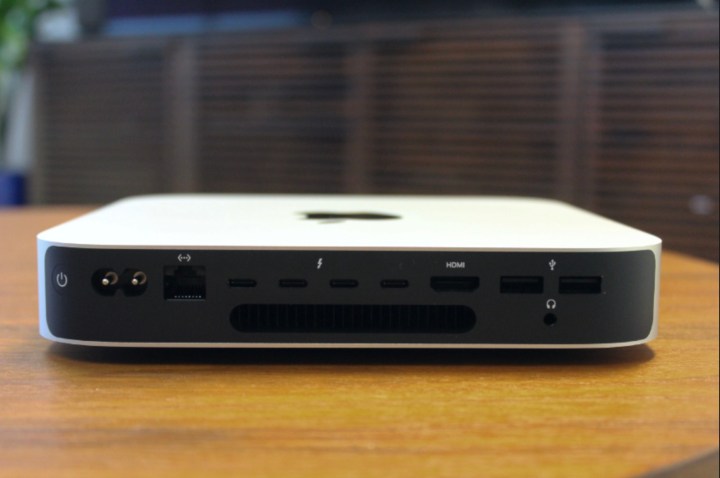
Apple tends to have an on-and-off relationship with putting an adequate number of ports on its products. Some devices have plenty, while others have barely any at all. Being aimed at professionals and creatives, the Mac Studio offers a good amount of connectivity options. The Mac mini loses this particular battle.
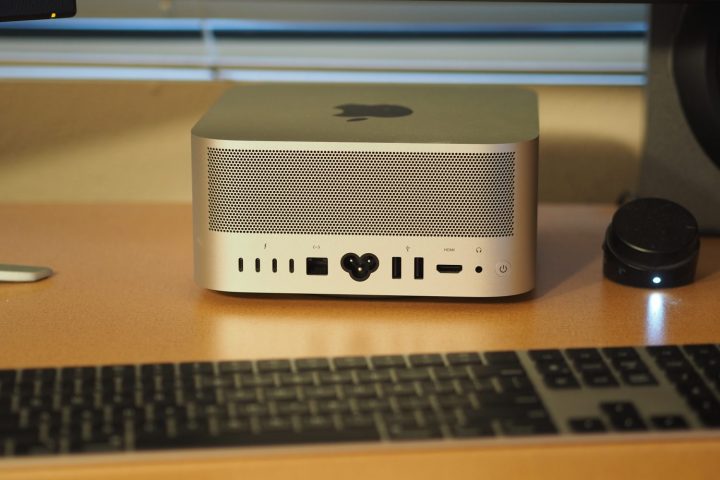
On the back, the Mac Studio comes with a whopping four USB-C with Thunderbolt 4 ports, two USB-A ports, an HDMI connection, a 3.5mm headphone jack, and 10Gb Ethernet in the back of the device. On the front, the M2 Max version has two additional USB-C ports, and the M2 Ultra model has two Thunderbolt 4 ports. There’s also an SD card reader.
The Mac mini uses the same new generation of ports but has fewer of them than its rival. The base M2 variant comes with two USB-A ports, two Thunderbolt 4 ports, an Ethernet jack, a headphone jack, and an HDMI port. The more expensive M2 Pro model bumps up the number of Thunderbolt 4 ports to four.
Display support is another point of differentiation. The Mac mini M2 model supports just two displays, and the M2 Pro model supports three. These are a mix of different resolutions and refresh rates, so check the specs carefully before choosing a configuration. The Mac Studio, on the other hand, supports five displays with the M2 Max version and eight displays with the M2 Ultra. Again, there are several different resolutions and refresh rate combinations with each, and careful consideration of your needs is warranted.
However, if you need more than three displays, then only the Mac Studio will meet your needs.
Performance
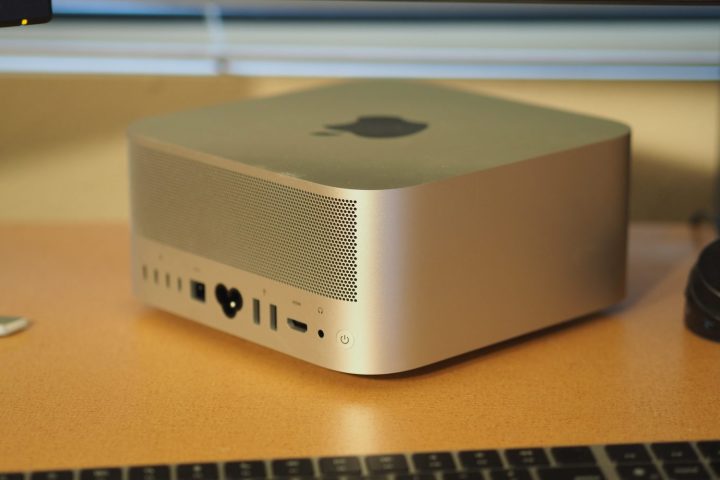
The Mac mini and the Mac Studio have a few things in common, but perhaps the most important shared trait is that these computers were made for professionals. Be it artists, content creators, or video editors, most owners of Apple’s mini PCs tend to use them for various creative workflows. As such, their performance is what matters the most.
In two CPU-intensive benchmarks, the Mac mini with the M2 Pro does well against the previous generation MacBook Pro with the M2 Max. It’s competitive with the Mac Studio in single-core tests, while the M2 Ultra’s additional cores give it almost twice the performance in multi-core applications.
| Cinebench R23 (single / multi) |
Geekbench (single / multi) |
|
| Mac Studio (M2 Ultra) |
1,651 / 28.740 | 1,954 / 28.062 |
| Mac mini (M2 Pro) |
1,649 / 14,812 | 1,957 / 14,959 |
| MacBook Pro (M2 Max) |
1,608 / 14,789 | 1,973 / 14,596 |
| iMac (M3 8/10) |
1,905 / 9,754 | N/A |
The Mac mini would again do well against all but the Mac Studio in graphics applications. If you run applications that can utilize the GPU, such as Adobe’s Creative Suite, the Mac Studio will be dramatically faster. Add in significantly faster memory, and the Mac Studio is the vastly superior desktop for sheer performance.



